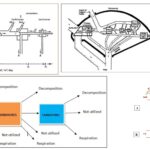A certain type of legal proceeding has three possible outcomes: in favor of party A, in favor of party B, or not in favor of either party. The outcomes are expected to be 40 percent, 20 percent, and 40 percent, respectively. A random sample of 40 cases is selected from a certain judge to investigate whether the judge’s outcomes are consistent with the expected outcomes. A chi-square goodness-of-fit test is conducted, and the value of the chi-square test statistic is χ2=9.19 with a corresponding p-value of 0.01. Assuming the conditions for inference were met, which of the following is the correct interpretation of the p-value? A) There is a 1 percent chance that the company’s claim is correct. B) If the null hypothesis is true, there is a 1 percent chance that the company’s claim is correct. C) If the null hypothesis is true, there is a 1 percent chance of obtaining a chi-square value of 9.19. D) If the null hypothesis is true, there is a 1 percent chance of obtaining a chi-square value of at least 9.19. E) There is a 1 percent chance of obtaining a chi-square value of at least 9.19.
A certain type of legal proceeding has three possible outcomes: in favor of party A, in favor of party B, or not in favor of either party. The outcomes are expected to be 40 percent, 20 percent, and 40 percent, respectively. A random sample of 40 cases is selected from a certain judge to investigate whether the judge’s outcomes are consistent with the expected outcomes. A chi-square goodness-of-fit test is conducted, and the value of the chi-square test statistic is χ2=9.19 with a corresponding p-value of 0.01. Assuming the conditions for inference were met, which of the following is the correct interpretation of the p-value?
A) There is a 1 percent chance that the company’s claim is correct.
B) If the null hypothesis is true, there is a 1 percent chance that the company’s claim is correct.
C) If the null hypothesis is true, there is a 1 percent chance of obtaining a chi-square value of 9.19.
D) If the null hypothesis is true, there is a 1 percent chance of obtaining a chi-square value of at least 9.19.
E) There is a 1 percent chance of obtaining a chi-square value of at least 9.19.
Please login to submit an answer.
Answer: D) If the null hypothesis is true, there is a 1 percent chance of obtaining a chi-square value of at least 9.19.
Explanation: The p-value represents the probability of observing a chi-square statistic as extreme as or more extreme than the observed value if the null hypothesis is true.
- Share on Facebook
- Share on Twitter
- Share on LinkedIn
Helpful: 0%




